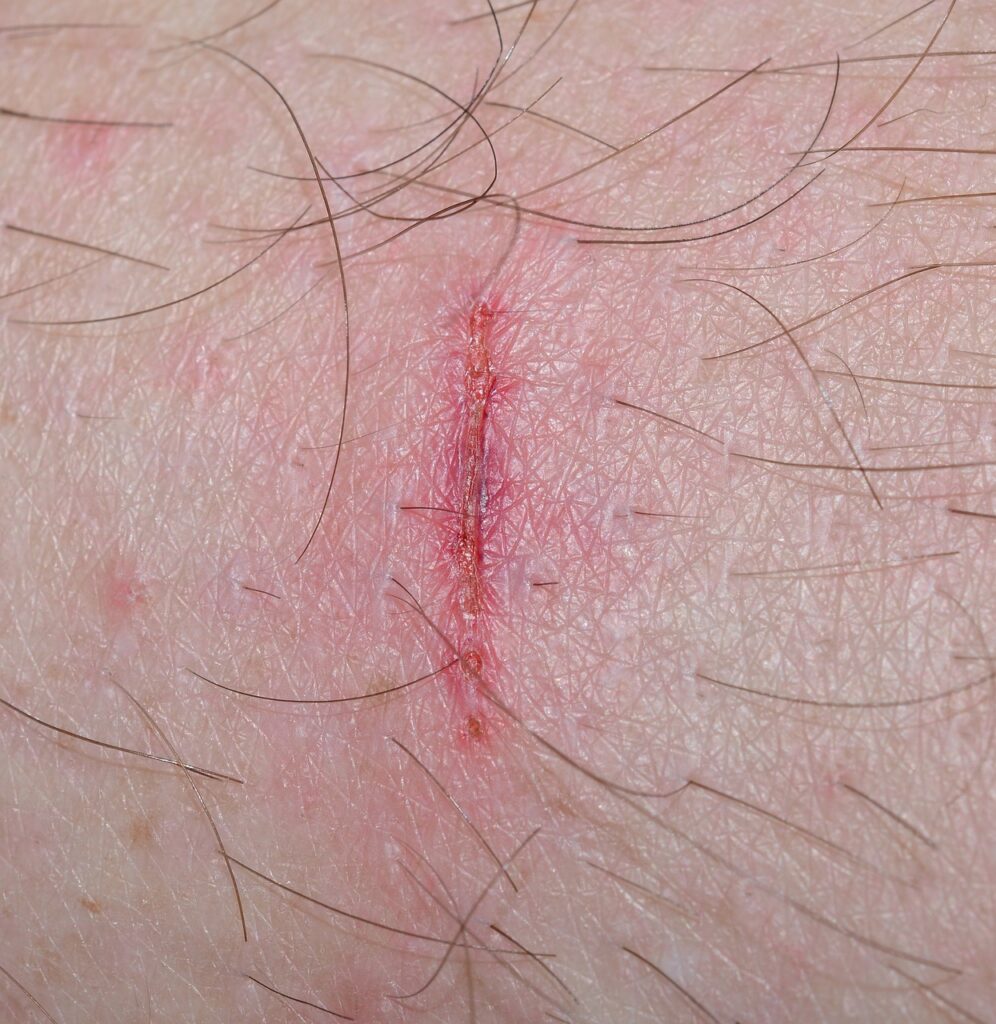Accidents can happen at any time, and knowing how to treat common wounds is an essential skill for maintaining health and preventing complications like infections. From minor scrapes to more serious cuts or burns, each type of wound requires specific care to promote healing. This guide outlines the proper steps and considerations for treating various wounds effectively.
Understanding Types of Wounds
Before treating a wound, it’s important to identify its type. Scrapes, also known as abrasions, occur when the skin rubs against a rough surface. These are usually superficial but can be painful. Cuts, or lacerations, are caused by sharp objects and may bleed more heavily depending on their depth. Puncture wounds, caused by pointed objects like nails or needles, are narrow and deep, posing a higher risk of infection. Burns are caused by heat, chemicals, or electricity and vary in severity, ranging from first to third degree. Finally, blisters are fluid-filled pockets under the skin caused by friction or burns. Each type requires tailored care to ensure proper recovery.
Immediate Steps for Treating Wounds
The first step in wound care is to wash your hands thoroughly with soap and water. This prevents bacteria from entering the wound. Next, address any bleeding by applying gentle pressure with a clean cloth or gauze. For minor scrapes, the bleeding may stop on its own. For deeper cuts, maintain pressure for at least ten minutes. Once the bleeding has stopped, rinse the wound under cool, running water to remove dirt and debris. Avoid using hydrogen peroxide or iodine directly on the wound as they can irritate the tissue; instead, opt for saline solution or mild soap. After cleaning, apply an over-the-counter antiseptic cream or ointment to reduce the risk of infection.
Bandaging the Wound
Covering the wound helps protect it from dirt and bacteria while promoting healing. For small wounds like minor cuts or scrapes, use an adhesive bandage. Change it daily or whenever it becomes wet or dirty. For larger wounds, sterile gauze and medical tape are better options. Secure the dressing snugly, but avoid wrapping it so tightly that it restricts circulation.
Specific Care for Different Wound Types
Each type of wound requires a slightly different approach. For scrapes, focus on gently cleaning the area to remove debris and cover it with a breathable bandage. Cuts should be closely monitored for depth; if edges gape or bleeding persists, seek medical attention as stitches may be necessary. Puncture wounds are particularly susceptible to infection. Clean the area around the wound carefully and watch for signs of redness, swelling, or pus. Burns should be cooled immediately with cool water for 10–15 minutes, but never apply ice or butter as these can worsen the injury. Cover burns with a sterile, non-stick dressing and seek medical help for severe cases. For blisters, avoid popping them as the skin acts as a natural barrier against infection. Cover with a clean bandage if needed.
Monitoring and Aftercare
Proper aftercare is essential for ensuring the wound heals without complications. Watch for signs of infection, including redness, swelling, warmth, increased pain, pus, or fever. If any of these occur, consult a healthcare professional. Change dressings regularly to keep the wound clean and dry, replacing them at least once a day or as needed. Avoid scratching or picking at scabs, as this can introduce bacteria and delay healing. Supporting the body’s natural healing process with a diet rich in protein, vitamins (especially vitamin C and zinc), and adequate hydration is also beneficial.
When to Seek Professional Help
Not all wounds can be treated at home. Seek medical attention if the wound is deep, large, or caused by a dirty or rusty object. Wounds on the face, hands, or other sensitive areas may require specialized care to minimize scarring or functional impairment. Persistent bleeding, delayed healing, or signs of infection are also reasons to consult a healthcare provider. Burns that cover a large area or are third-degree, characterized by charred skin or numbness, should be treated by a medical professional immediately.
Preventing Wounds
While it’s crucial to know how to treat wounds, prevention is equally important. Wearing protective gear while using sharp tools or engaging in risky activities can help avoid injuries. Proper footwear and clothing reduce the risk of burns and puncture wounds, and maintaining a hazard-free environment can minimize accidents at home.
Treating wounds effectively involves a combination of cleanliness, protection, and monitoring. By understanding the type of injury and following the appropriate steps, you can promote faster healing and prevent complications. Keeping a well-stocked first aid kit and knowing when to seek professional help are essential aspects of wound care. With the right approach, even the most common injuries can heal quickly and without issue.


